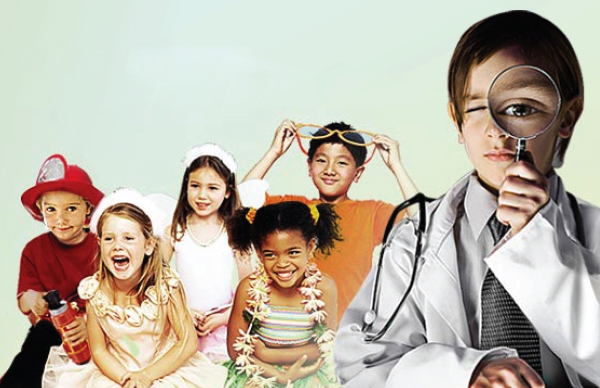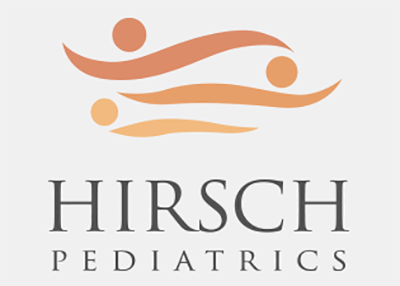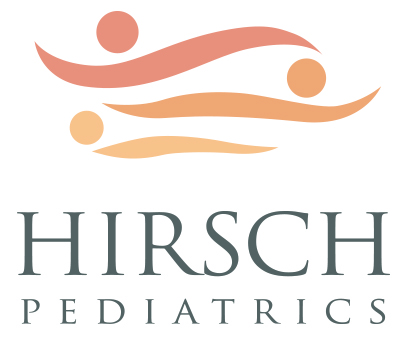
At Hirsch Pediatrics we strive to ensure our current patients have the child care answers they need when they need them. Below please find answers to your most common questions about our practice and your child’s appointments. We are always available by phone or Patient Portal if you have any questions that are not addressed in this section.
Appointment Information
Scheduling Sick Visits & Check-up Schedule
Sick Visits
At Hirsch Pediatrics, we prioritize making same-day appointments available for all requests for urgent sick visits that we receive by phone before 3:00 pm (2:00 pm on Friday’s). Phone requests for sick visits received between 3:00 – 4:00 pm will only be scheduled if available. All phone requests for sick visits after 4:00 pm will be scheduled for the following morning. If you think your child needs a same-day appointment, please call 301.990.3030 before 3:00 pm (2:00 pm on Friday’s) to ensure availability.
Note: Hirsch Pediatrics does not have walk-in appointments. If you think your child needs to be seen urgently, please notify us as soon as possible so we can rearrange the schedule to accommodate your child.
Well Child
Early in life, especially before the age of 12 months, children require frequent well-child exams. At each visit, in addition to a complete physical exam and review of your child’s growth chart, we will discuss many issues including your child’s development (gross motor, fine motor, language, social), feeding and sleep patterns, safety issues, and goals for your next visit.
The recommended schedule involves a well-child exam at the following ages:
| Newborn | Infant | Child |
| First office visit within 1 – 3 days after leaving the hospital
In-office lactation consult appointment (if needed) 2 weeks ** |
1 month
2 months* 4 months* 6 months* 9 months** 12 months* |
15 months*
18 months* 24 months** 30 months 36 months yearly thereafter |
* vaccinations usually given at appointment
** blood draw usually done at appointment
Insurance/Billings
Credit Card on File Authorization
Hirsch Pediatrics always strives to provide the highest quality, family-centered care. To continuously improve our ability to provide the best possible care we have updated our financial policies as of October 2023 to require a Hirsch Pediatrics credit card on file authorization for current and outstanding charges that your insurance does not cover but for which you are liable.
What are the advantages of keeping a credit card on file?
- Quicker check-ins at your appointments.
- Easier payments of balances with no paper bills to mail.
- Easier refunds or credits to your credit card.
- Streamline the outstanding balance collection process for Hirsch Pediatrics so we can focus our time and energy on your family’s healthcare!
Without this authorization a billing fee of $10.00 per month per statement will be added to your account for any balances that we have to collect through mail, phone call, or other means. In order to avoid such charges, keeping your credit authorization on file allows us to collect the initial copay or future balance (if any) once your insurer has processed claims for any services rendered.
Your credit card information is kept confidential and highly secure by our third party credit card merchant that is subject to all state and federal data protection laws. Hirsch Pediatrics does not store nor have access to any credit card numbers. Payments will only be processed after the claim has been filed and processed by your insurer, and the insurance covered portion of the claim has been paid and posted to your account.
Insurance
Hirsch Pediatrics participates with the following insurances listed below.
Adventist Health
Aetna
Blue Cross Blue Shield
CareFirst
Cigna/Great West
Coventry
Johns Hopkins Employee Health Plan
Tricare Standard PPO
Trustmark
UnitedHealthCare (UHC) private insurance only for medical care (**UHC is still out-of-network for mental health therapy visits.)
Note: Hirsch Pediatrics does not participate with any state insurance or Medicaid plans.
Note: If your insurance plan requires you to designate a primary care physician (“PCP”), you must select our office prior to your first visit. If Dr. Hirsch is not designated as the PCP prior to the first visit, you may incur extra costs if the insurance company processes the claim as an out-of-network visit.
Will my child’s check-up require a copay or deductible?
Fortunately the majority of insurances will fully cover your child’s regularly scheduled check-ups. At your child’s check-up, Hirsch Pediatrics will ensure that all recommended preventive services and screening tests are completed according to the American Academy of Pediatrics (AAP) Bright Futures guidelines. This includes vaccinations, developmental/mental health screening, hearing and vision exams, and screening lab tests. Even though these services are recommended by the AAP, some insurances will require an additional copay or deductible for these additional recommended services. If you want to confirm coverage with your insurance before the check-up, Hirsch Pediatrics is happy to provide you with a list of the recommended preventive services and screening tests that your child will receive.
In addition, when your child’s check-up is combined with another “non-check-up” visit at the same time your insurance may require an additional co-pay or deductible. The most common double visits are when your child comes in for a check-up but also has their ADD/depression medications discussed or refilled and when your child comes in for a sick visit but is overdue for a check-up and we are able to add in a check-up at the same time.
No Extra Annual or Form Fees!
Hirsch Pediatrics does not charge an annual fee or other additional fees for school/camp forms, prescription refills, or after-hours call. As your family’s medical home, our “no fee”policy will save your family over the years between one to two thousand dollars!
Additional Links
CHADIS
Remember to please complete a CHADIS survey prior to every Well Child appointments. You can access your CHADIS survey through your child’s patient portal account.
Infection Control
Your child’s safety in our office is our priority! That is why Hirsch Pediatrics has developed extensive office guidelines to minimize the risk of office cross contamination. We have focused our efforts with several proactive policies:
- Toys: No group toys will be provided. Especially because it would be impossible to clean every group toy after every child, I have created a system where each child has his or her own bucket of toys for the duration of their visit. These toys are given to the child upon their arrival in the waiting room and kept throughout the visit. After the bucket has been used and prior to the next use, all of the toys are disinfected.
- Waiting Room: Twice a day we will do a thorough disinfectant wipe down of the waiting room, including all chairs, countertops, and door handles. Also, we will strive to minimize your time in the waiting room.
- Examining Rooms: Although table paper prevents some contamination, the use of it is an ineffective substitute for true examining room infection control. If in fact the only surface that the doctor, patient, and parent touched throughout the entire visit were the table paper, simply changing it would suffice. However, changing the paper does not disinfect the rest of the potentially contaminated examine room surfaces. After every patient visit, we will use a hospital-grade antimicrobial wipe to disinfect the entire examining room, including the part of the examining table not covered by the paper as well as the doorknobs, drawer handles, computer keyboards, and exam room chairs. The room is only ready for the next patient after all of these surfaces have been disinfected.
- Hand Disinfection: Throughout the office, you will notice what look like small, upside down canisters of whipped cream attached to the walls. These are not for spontaneous ice cream socials; rather it is the most effective way of keeping my hands disinfected in between patient appointments. The canisters contain an alcohol based disinfectant foam that has been shown to be substantially more effective at disinfecting hands then the conventional soap and water system (Guideline for Hand Hygiene in Health-Care, MMWR. 2002; 51:1-44). Additionally, proper hand washing techniques are very time consuming and are rarely used in traditional doctors’ offices. While in my office, I encourage you to use the foam for yourself and your children as needed. Remember, just a small dab is plenty and it dispenses like a whipped cream container.
We are often asked why we do not have two separate waiting rooms. In theory, having two waiting rooms sounds like a wonderful way to decrease the incidence of children being unnecessarily exposed to contagious infections in a doctor’s office. However, as clearly stated in the American Academy of Pediatrics Policy Statement on Infection Control in Physicians’ Offices:
There are no studies documenting the need for, or benefit of, separate waiting areas for well and ill children. Efforts should be made to limit transmission of infectious agents by avoidance of crowding, shortening waiting times, and minimizing the sharing of toys.
Thus, in designing the office, I purposefully chose not to create two separate waiting rooms. Rather, I chose to focus on those areas that have been proven to reduce disease transmission in any setting, whether it is a doctor’s office, shopping mall, grocery store, or your own home.
Most infections are spread by transmitting a germ from a contaminated surface to a mucous membrane. When I say, “contaminated surfaces,” I am referring to surfaces where a living germ has landed or been placed (usually by a contaminated hand), such as doorknobs, elevator buttons, chair rails, toys, and other people’s hands. Mucous membranes are parts of your body that can internalize a germ and thus lead to infection. These include your eyes, nose, and mouth. After several hours, many germs die and the contaminated surfaces usually become less infectious. Therefore, the vast majority of infections are transmitted when a child or their caregiver touches a contaminated surface and thereby contaminates their hands, and then touches their (or someone else’s) eyes, nose, or mouth.
Medical Advice and Handouts from Dr. Hirsch
Click HERE for a list of Dr. Hirsch’s very detailed Medical Advice handouts.
Mental Health/Therapy/Behavioral Health
Hirsch Pediatrics is proud to offer in-network mental health care to our current patients, from our team of dedicated therapists, in order to recognize and address mental health needs as early as possible when the symptoms can be more easily managed and not lead to long-term emotional or behavioral issues. To make our therapists as accessible as possible to your family, all therapy appointments at Hirsch Pediatrics are in-network with most insurances.
Click HERE for Mental Health Care Services
Patient Forms
Patient Portal
Click Hirsch Pediatrics Patient Portal to directly access the Patient Portal.
- You only need one Patient Portal login/password per family.
- You can conveniently use your Patient Portal to send us patient care or office message, daycare/school forms, pictures of your new insurance card, and pictures of any concerning symptoms.
- To send us a video please provide us a Google Drive link.
Teenage Patients at Hirsch Pediatrics
Learn how we partner with our older patients and their families to manage healthcare.
Click HERE information about being a teenage patient at Hirsch Pediatrics.
Vaccine Policy / Vaccination Schedule
One of the cornerstones of my medical philosophy is to keep our children safe and healthy through disease prevention. The routine use of vaccines is arguably one of the greatest medical interventions with its dramatic reduction of childhood disease and death—the statistics are quite impressive. The following table published by the CDC demonstrates the dramatic impact of vaccines on public health in the 20th century:
| Disease | Baseline 20th Century Annual Morbidity |
2001 Morbidity |
Percent Decrease |
| Smallpox | 48,164 | 0 | 100 |
| Diphtheria | 175,885 | 2 | >99 |
| Pertussis | 147,271 | 7580 | 95 |
| Tetanus | 1,314 | 37 | 97 |
| Polio | 16,316 | 0 | 100 |
| Measles | 503,282 | 116 | >99 |
| Mumps | 152,209 | 266 | >99 |
| Rubella | 47,745 | 23 | >99 |
| Congenital Rubella Syndrome | 823 | 3 | >99 |
| Haemophilus influenzae type B | 20,000 | 181 | >99 |
I wholeheartedly support the American Academy of Pediatrics recommendation that every child be fully vaccinated in a timely fashion. As of January 1, 2009, if you wish to significantly modify the vaccination schedule, I am no longer able to provide care to your child and will ask you to find another pediatrician that has an alternative vaccine philosophy.
By adhering to the recommended schedule for all children of Hirsch Pediatrics, I want to reassure other parents (especially those with newborns) that their child will not be unnecessarily exposed to vaccine preventable diseases at his or her visit to Hirsch Pediatrics.
Substantial and ongoing research has demonstrated that it is extremely safe to give kids multiple vaccines at a time. As noted in the article Too Many Vaccines? What you should know, published in Fall 2008 by the world renowned Vaccine Education Center at the Children’s Hospital of Philadelphia:
Thirty years ago, children received seven vaccines, which protected against measles, mumps, rubella, diphtheria, tetanus, pertussis and polio. The total number of bacterial and viral proteins contained in these seven vaccines was a little more than 3,000. Today, children receive 14 different vaccines, but the total number of immunological components in these vaccines is only about 150. This dramatic reduction is the result of scientific advances that have allowed for purer, safer vaccines.
Given that infants are colonized with trillions of bacteria, that each bacterium contains between 2,000 and 6,000 immunological components and that infants are infected with numerous viruses, the challenge from the 150 immunological components in vaccines is minuscule compared to what infants manage every day.
I recommend that any parent that still has questions or concerns about administering multiple vaccines at once click HERE to read the full text of this publication.
Understandably, many parents will ask the following question, “If these diseases are so rare, then why is it so important for my child to be vaccinated?” In fact, as long as a disease still exists in any part of the world, vaccinating your child will offer protection not only to your own child but to all of the children in your community. This is the principle of Herd Immunity:
The effectiveness of a vaccine depends, amongst other things, on the percentage of the population which has received it and is still within the period of protection offered by that vaccine. Vaccinated people act as a sort of “firebreak” in the spread of the disease, slowing or preventing the further transmission of the disease to others. Since the protection offered by vaccines is rarely 100%, the vaccine will be more effective if more people have been vaccinated. This is because the disease may be able to jump from one unvaccinated person to another person who has not been vaccinated, but is unlikely to be able to jump from one unvaccinated person to another who has been vaccinated. Virologists and epidemiologists who have studied these areas have found that when a certain percentage of a population is vaccinated, the spread of the disease is effectively stopped. This critical percentage depends on the disease and the vaccine, but 90% is not uncommon. This is herd immunity – the fact that others in the herd or population have been vaccinated provides protection to all others, whether or not vaccinated themselves.
Finally, in responding to questions of vaccine safety, I consider rigorous scientific research and continued post-marketing surveillance for guidance on what the best choice for your child is. When it comes to the health of our children, I want to be sure that these vaccines are as safe as possible, and like any medical intervention, that the benefits of vaccinating your child strongly outweigh the risks.
What is the vaccination schedule?
Hirsch Pediatrics utilizes the vaccination schedule recommended by the Centers for Disease Control and approved by the American Academy of Pediatrics. Because of the flexibility in the exact timing and choice of vaccines, we have been able to design a vaccine administration schedule that will provide complete protection to your child while minimizing the total number of injections.
In most cases, your child will receive vaccinations prior to leaving the hospital and at the 2 month, 4 month, 6 month, 12 month, 15 month, and 18 month visits. The remaining vaccines will be given at age 4, between ages 10 to 12 years, and then finally in high school prior to college.
Prior to administering any vaccine to your child, we will always review the most up-to-date research to ensure the highest level of safety and effectiveness in the vaccine.

